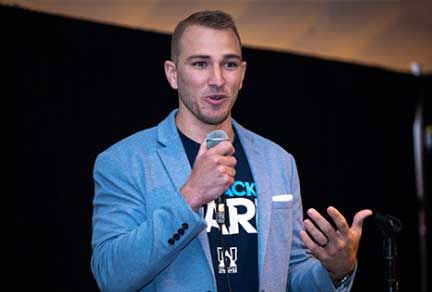Accelerating clinical trial success with high-performing sites
Many studies fail to meet enrollment timelines, and inadequate patient recruitment is the top reason that studies are forced to close early.1
Investigative site selection can make all the difference in clinical research success or failure. At the same time, sites face unprecedented operating challenges, from increasing protocol complexity to resource constraints, protracted budget negotiations and workforce turnover, to contending with myriad new technologies.
At Parexel, we understand the need to strengthen collaboration with investigators and drive new approaches to deliver better trial outcomes. As a core part of our commitment to identify, recognize, and support high-performing clinical research sites, Parexel’s Site Alliance program is designed to create measurable value for your clinical development programs.
By leveraging Parexel’s Site Alliance, you gain access to a curated group of 300+ high-performing sites who meet Parexel’s rigorous quality and performance standards and bring disease specific experience to execute with excellence.
Our data shows that studies supported by Parexel Alliance Sites experience:
- 40% faster activation to the first critical milestone of First Patient First Visit (FPFV) than non-alliance sites
- Nearly 20% faster timelines for study start-up completion than non-alliance sites
- 4x more patient enrollments per site than non-alliance sites, on average
Parexel’s Alliance Sites partner with Parexel to co-create solutions to improve research and the patient experience. We leverage their expertise and feedback to optimize and support:
- Protocol design
- Patient recruitment
- Technology feasibility
- Increased trial volume
- New models, solutions and systems
- Patient-centered trial design
- Optimize study launch to enable best-in-class delivery to our customers
We continuously look for ways to make study launch activities more efficient. Some examples include:
- Improving upfront planning and forecast accuracy to provide more predictable delivery
- Improving cycle times, quality, and efficiency
- Using our tools and expertise to select the right sites to enroll the right patients
- Optimizing our site alliances and overall site network
- Leverage our SMEs to make study start-up more efficient
Enabling Successful Sites
This thought leadership series focuses on uncovering the root causes of some of the biggest challenges facing investigative sites today.
Getting deeper insights from KOLs
As a service in the early development of protocols, we invite our sites’ investigators to act as key opinion leaders (KOL). They’re the ones walking the journey with patients and their caregivers every day, making them uniquely capable of identifying the barriers to recruitment and retention so we can address them from the start. The result is a trial that requires fewer protocol amendments and faces fewer recruitment problems, saving you time.
Increasing participation in clinical studies
Currently, less than 10% of physicians and patients participate in clinical research, and among patients who participate, minority groups are significantly underrepresented. Research activities are often concentrated in academic institutions and investigator sites, so patients and their providers are often unaware of the work; and even if they’re interested, many lack the time and resources required to join studies.
Our Community Alliance Network is a collaboration that brings clinical research more fully into community healthcare settings. This model aims to make access to clinical research part of a patient’s routine healthcare experience. Through our Community Alliance Network partnerships, we support thousands of community practitioners and eliminate many barriers to provider involvement.
When we link patients to studies through their established care delivery systems, we’re empowering physicians to offer more treatment options, removing participant barriers, and connecting with underserved communities.
Winners of the 2023 and 2024 Eagle Award by Society of Clinical Research Sites
The SCRS Eagle Award recognizes the sponsor and CRO committed to outstanding leadership, professionalism, integrity, passion and dedication to advancing the clinical research profession through strong site partnerships. Recipients of the Eagle Award are selected based on votes cast from the global site community. This recognition reaffirms our commitment to collaborating with sites, which is crucial for accelerating drug development and ultimately benefiting patients. Receiving this award two years in a row is a reflection of the efforts and innovative spirit of our global site-facing and site-supporting team.
Resources
Our Experts
Frequently asked questiosn
A clinical research site network is a group of healthcare facilities, clinics, hospitals, or dedicated research centers that collaborate under a unified management structure to conduct clinical trials. These networks bring together multiple research sites with shared standard operating procedures, quality standards, and administrative processes, allowing for more efficient patient recruitment, streamlined study startup, and consistent protocol implementation across locations. Site networks can be organized regionally, nationally, or globally, and may specialize in specific therapeutic areas or trial types.
The primary advantage of site networks is their ability to accelerate clinical research through economies of scale and operational efficiencies. Sponsors and CROs often prefer working with established networks because they offer access to larger patient populations, experienced research staff, and proven track records of performance. Additionally, site networks typically provide centralized contracting, budgeting, and regulatory submissions, reducing administrative burden and study timelines. Many networks also implement standardized technologies for data collection and patient engagement, further enhancing the quality and consistency of clinical trial execution across multiple locations.
Parexel’s Site Alliance team, with input from other teams (feasibility, project teams), put sites through a rigorous selection process to identify the top sites that meet our study needs. Below are the criteria they are evaluated against.
- The site or network must be in operation for at least 2 years. If the site hasn’t previously worked with Parexel, there is a formal Compliance Due Diligence (CDD) screening process.
- Parexel’s study data must show strong performance:
-Number of studies
-Therapeutic Area experience
-Average startup and contract cycle times
-Recruitment factors
-Recruitment rates (where possible) - The Site Alliance team conducts a comprehensive site visit to review facilities, equipment, processes, and resources.
- Site experience and capabilities align with Parexel’s current and future business needs:
-Site type
-Locations
-Patient population
-Parexel’s priority therapeutic areas and indications - The site agrees to:
-Provide a SPOC and engage in regular site relationship calls
-Complete and maintain a comprehensive site profile document
-Continuous re-evaluation (annually)
Browse our latest insights
Want to hear from our experts on the latest industry topics? Visit our Insights Center to read, watch, and listen.



